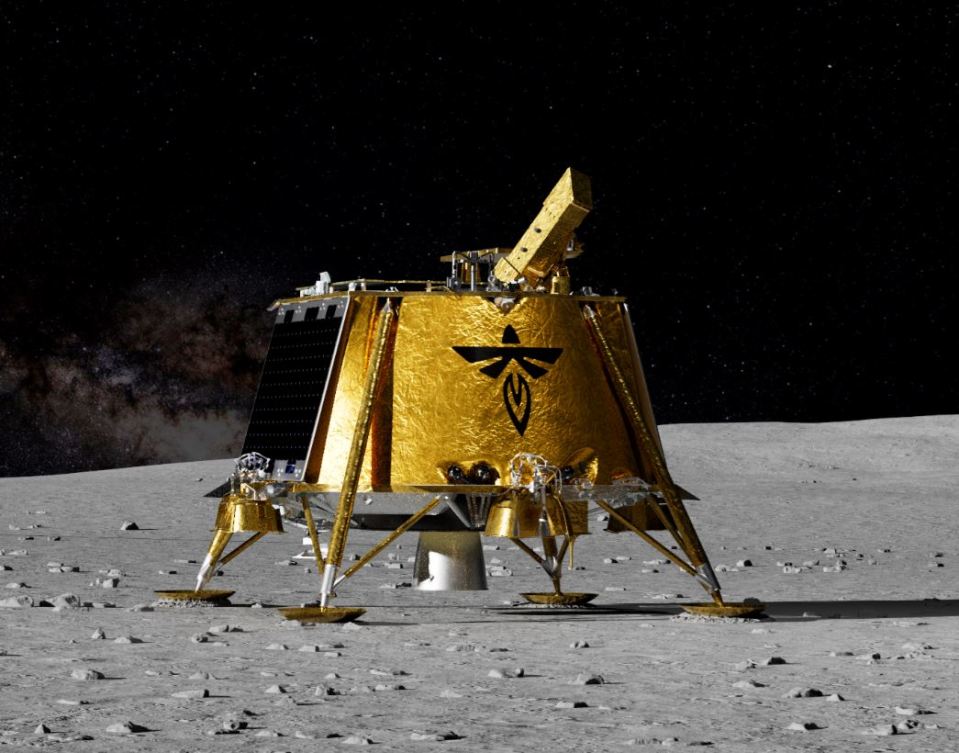SpaceX to launch two lunar landers in DAYS as scientists hope to measure Moon radiation before setting up a human colony
Next week, scientists plan to launch two lunar landers to collect the data needed to establish human habitation on the moon.
A SpaceX Falcon 9 rocket is scheduled to launch the Resilience spacecraft from Japanese business iSpace and the Blue Ghost lunar lander from private US company Firefly Aerospace.
As of right now, the launch from Launch Complex 39A at NASA’s Kennedy Space Center in Florida is set for January 15 at 1:11 am EST (6:11 am GMT).
The Firefly’s Blue Ghost lander will be launched into Earth’s orbit by the Falcon 9 rocket and will stay there for 25 days.
It will set itself on a straight line to the moon by performing an engine burn.
After 16 more days of orbiting the Moon, the spacecraft will get ready to land in Mare Crisium, also known as the Sea of Crises, which was the site of an ancient asteroid crash.
READ MORE ON SPACE
Daring space missions in 2025: China’s asteroid retrieval & first ‘luxury’ station
Saturn’s rings vanish and twin Blood Moons must-see 2025 space events
Within 30 minutes of landing, if it makes it through the trip, Blue Ghost will start transmitting high-definition pictures of the lunar surface back to Earth.
Ten NASA science experiments will be on board, one of which calls for gathering moon dust in order to gauge radiation levels on the moon’s surface.
Another will study the interaction between the Earth’s magnetic field, or magnetosphere, and the solar wind, which contains the chemicals responsible for the Northern Lights.
According to Hyunju Connor of NASA, “We expect to see the magnetosphere breathing out and breathing in, for the first time,” during the statement.
“When the solar wind is very strong, the magnetosphere will shrink and push backward toward Earth, and then expand when the solar wind weakens.”
Additionally, a third experiment seeks to determine the Earth-Moon distance with sub-millimeter precision.
Since Intuitive Machine’s Odysseus lander in February of last year, Blue Ghost would be the second mission to successfully land on the moon.
In addition to becoming the first private spacecraft to set foot on the moon, Odysseus was the first American spacecraft to land on the moon since 1972.
Tenacious, a micro-rover that iSpace intends to sell back to NASA, will be delivered by the Resilience lander to collect lunar dirt.
A self-contained module intended for lunar food production experiments will also be carried by the lander.
As a business that has felt the anguish of failure, iSpace knows how important it is to grow from mistakes and try again.
The company behind the spacecraft is the same one that launched the Hakuto-R lander to the moon in April 2023.
But when it struck the lunar surface, the audacious mission was a failure.
During a press conference on Thursday, company executives were optimistic about the company’s chances of success.
When iSpace CEO Takeshi Hakamada stated, “This will be a new challenge for us,”
“iSpace knows how important it is to learn from mistakes and try again because it has been through the frustration of failure.
“We aim to achieve a successful moon landing and deliver excitement to the world.”
Read More on The US Sun
Hear moment Trump is sentenced and judge’s final remark after historic ruling
Dunkin’ employee leaks new winter menu ahead of February release date
As part of NASA’s Commercial Lunar Payload Services (CLPS) program, both landers are in route to the moon.
Few Moon landers are designed to withstand the cold temperatures of the Moon at night, and they have only 14 days to complete their tasks before lunar night falls.
The Moon our closest neighbour explained
What you should know is this…
- The Moon is a natural satellite a space-faring body that orbits a planet
- It s Earth s only natural satellite, and is the fifth biggest in the Solar System
- The Moon measures 2,158 miles across, roughly 0.27 times the diameter of Earth
- Temperatures on the Moon vary wildly. Nasa explains: “Temperatures near the Moon s equator can spike to 250 F (121 C) in daylight, then plummet after nightfall to -208 F (-133 C). In deep craters near the Moon s poles, permanent shadows keep the surface even colder NASA s Lunar Reconnaissance Orbiter has measured temperatures lower than -410 F (-246 C).”
- Experts assumed the Moon was another planet, until Nicolaus Copernicus outlined his theory about our Solar System in 1543
- It was eventually assigned to a class after Galileo discovered four moons orbiting Jupiter in 1610
- The Moon is believed to have formed around 4.51billion years ago
- The strength of its gravitational field is about a sixth of Earth s gravity
- Earth and the Moon have synchronous rotation , which means we always see the same side of the Moon hence the phrase dark side of the Moon
- The Moon s surface is actually dark, but appears bright in the sky due to its reflective ground
- During a solar eclipse, the Moon covers the Sun almost completely. Both objects appear a similar size in the sky because the Sun is both 400 times larger and farther
- The first spacecraft to reach the Moon was in 1959, as part of the Soviet Union s Lunar program
- The first manned orbital mission was Nasa s Apollo 8 in 1968
- And the first manned lunar landing was in 1969, as part of the Apollo 11 mission











